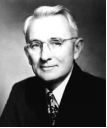题目内容
【题目】 Taj Mahal (泰姬陵), one of the Seven Wonders of the World, was built by Mughal Emperor Shah Jahan for his beloved wife Mumtaz Mahal. Exploring the beauty of this cultural relic along with the first rays of the sunlight, you’ll find yourself in a fantastic view. People have described the entire relic as a polished (抛光的) jewel in the morning sunshine.

Here is a route for you to enjoy the beautiful relic. The lowest price guarantee (保证) is $29.00.
Stop at: The hotel in New Delhi
Pick up from the hotel in New Delhi at 3:30 am and drive to Agra.
Duration (时长): 4 hours
Stop at: Taj Mahal
Note: Taj Mahal remains closed on Friday.
Duration: 2 hours
Stop at: Agra Fort
After visiting Taj Mahal, go on to visit Agra Fort, which was built in 1565 A. D. by Great Mughal Emperor Akbar.
Duration: 1.5 hours
Stop at: Mughal Spicy Restaurant
After the end of Agra fort, move towards Mughal Spicy Restaurant to have lunch. It provide you with delicious food of this city.
Duration: 1 hour
After the trip, our assistant will drive you back towards Delhi.
For more information, you can visit our website www. viator. com.
【1】Taji Mahal is closed on ________.
A.FridayB.Thursday
C.WednesdayD.Monday
【2】How long does it take to visit Agro Fort?
A.4 hours.B.1.5 hours.
C.2 hours.D.1 hour.
【3】Where does this text most probably come from?
A.A geography textbook.
B.A historical report.
C.A travel website.
D.A design magazine.
【答案】
【1】A
【2】B
【3】C
【解析】
本文是应用文,是一个旅游网站上的关于泰姬陵旅游线路的介绍。
【1】细节理解题。根据Stop at: Taj Mahal这一部分“Note: Taj Mahal remains closed on Friday”可知泰姬陵星期五关闭。故选A项。
【2】细节理解题。根据Stop at: Agra Fort这一部分中“Duration: 1.5 hours”可知,参观Agra Fort城堡持续时间为1.5小时。故选B项。
【3】推理判断题。根据文章最后一段“For more information, you can visit our website www. viator. com”可知,这是一个旅游网站上的关于泰姬陵旅游线路的介绍,文章来自于一个旅游网站。故选C项。

 名校课堂系列答案
名校课堂系列答案


